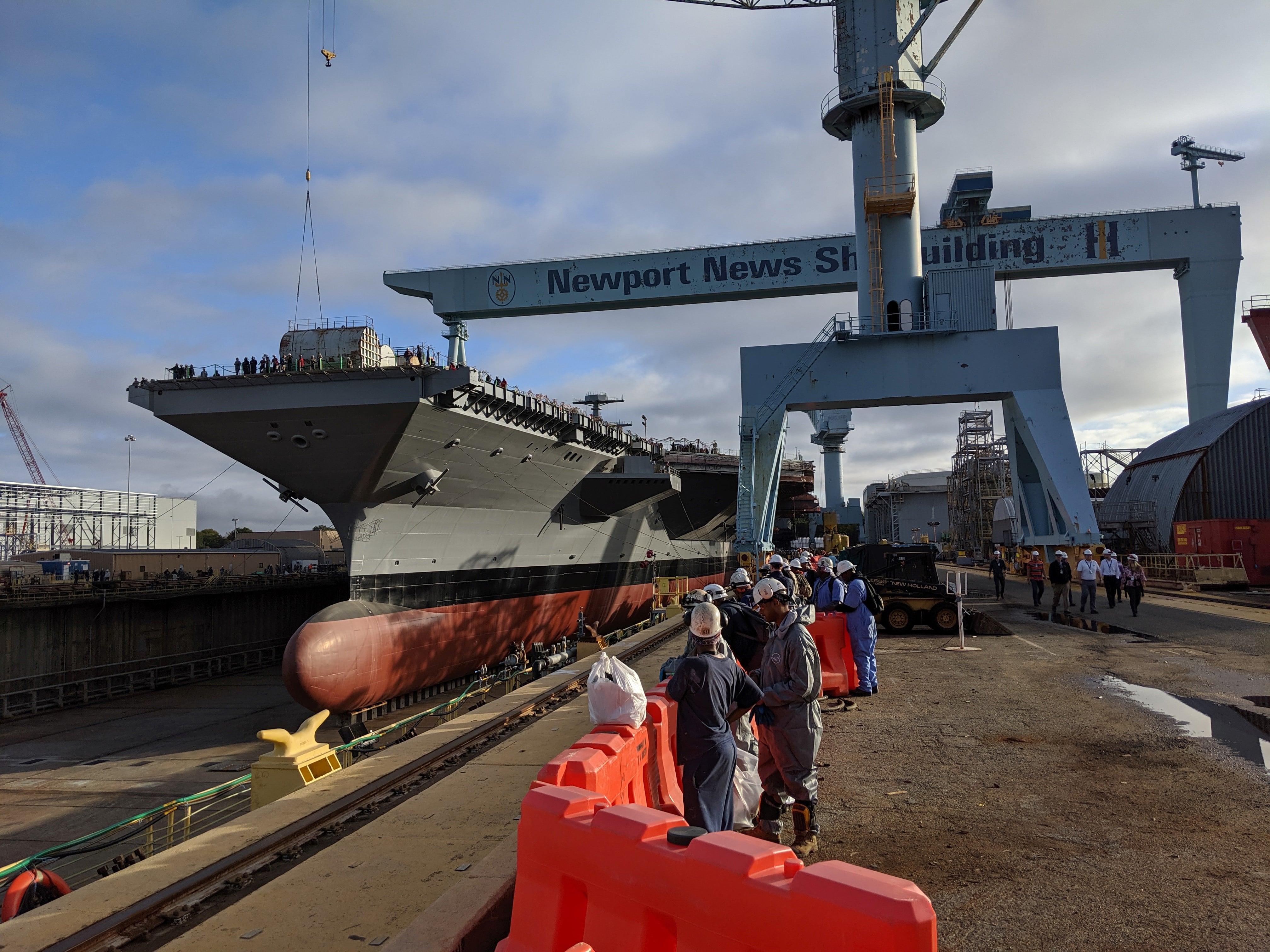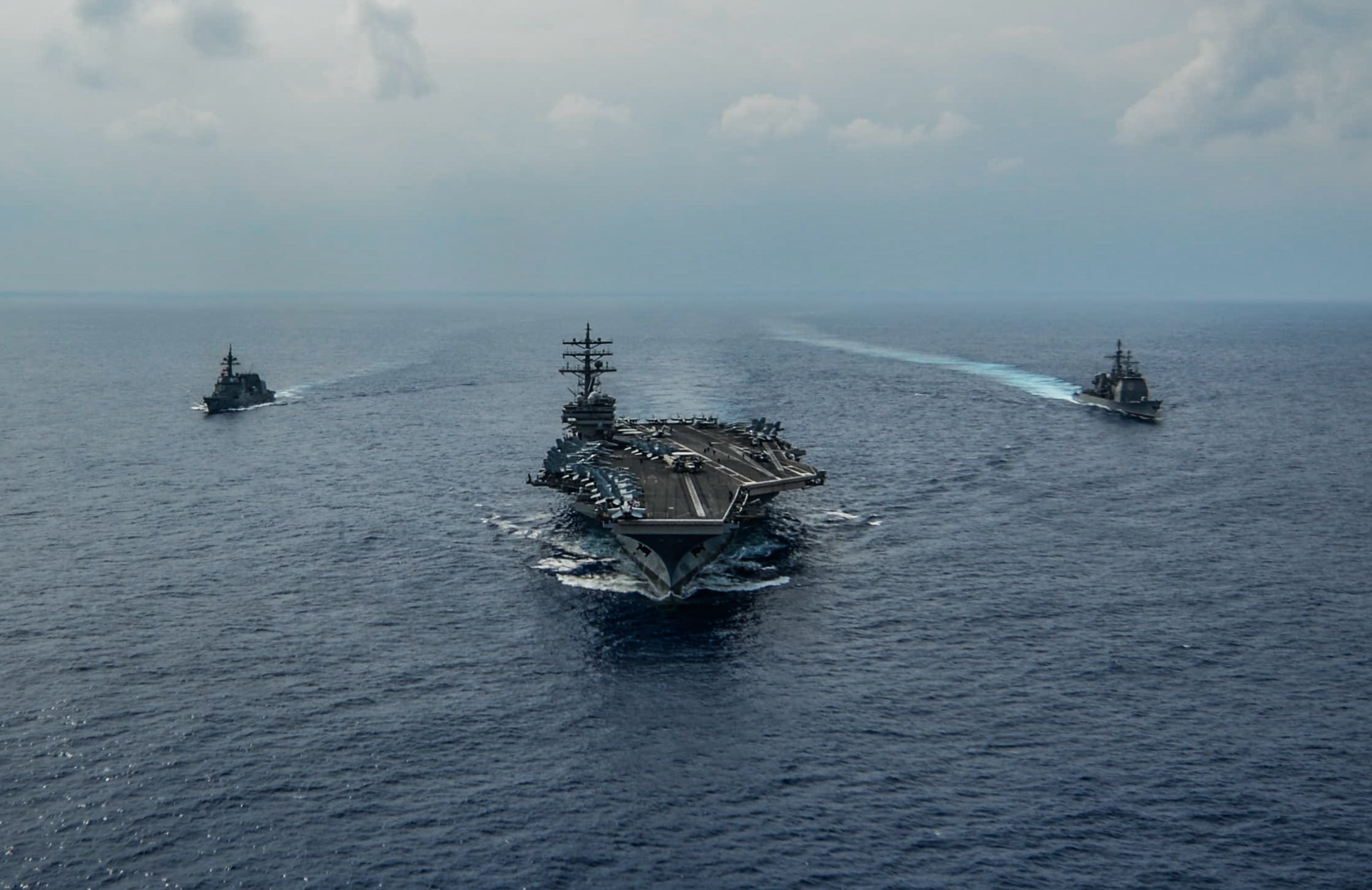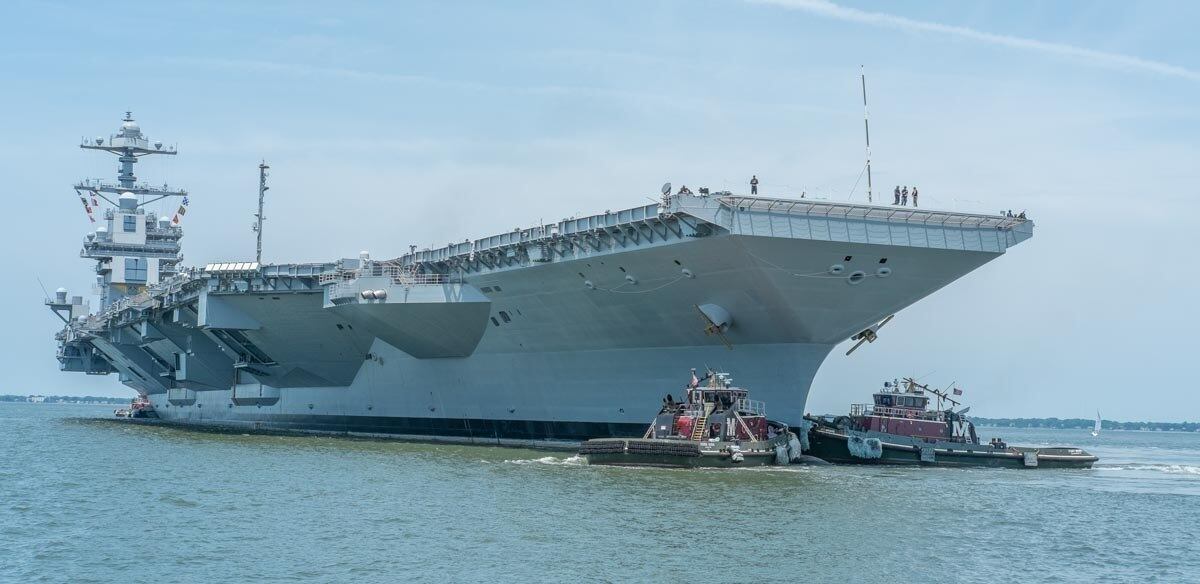WASHINGTON — The U.S. Navy’s top priority is to get the troubled aircraft carrier Gerald R. Ford on deployment, the acting secretary of the Navy said in a Dec. 6 directive.
In a memo to the fleet, Thomas Modly said his top objective for his time in office is to “put all hands of deck to make … Ford ready as a warship as soon as practically possible.”
The memo from Modly comes in the wake of a controversy that rocked the previous secretary of the Navy. Richard Spencer was fired after he failed to make good on a promise to the president to have the Ford’s advanced weapons’ elevators ready by this summer when the Ford finished its post-shakedown period in the shipyard.
Modly’s memo follows up on comments at the USNI Defense Forum where he said the Navy must get Ford off its plate to remove it as a “whipping boy,” as it’s hurting the service’s reputation.
“The Ford is something the president cares a lot about, it’s something he talks a lot about, and I think his concerns are justified,” Modly said. “It’s very, very expensive, and it needs to work.
“And there is a trail of tears that explains why we are where we are, but right now we need to fix that ship and make sure it works. There is nothing worse than having a ship like that, our most expensive asset, being out there as a metaphor for why the Navy can’t do anything right.”
RELATED
Amid the latest Ford controversy, a green workforce is making rapid progress on its sister ship
Spencer blamed the delay of the weapons’ elevators on poor communication from Huntington Ingalls Industries’ Newport News Shipbuilding, which built the carrier, saying he questioned whether the shipyard really knew what it was doing. Responding to a question from Defense News at the USNI Forum, Huntington Ingalls’ top executive, Mike Petters, said his company thought they had a path to getting the elevators done, but issues arose.
“In the specific case of the weapons’ elevators, what we understood at the end of last year was we had the structure in place, we know how to do that,” HII’s president and chief executive said. “We have 19 new technologies that, by and large, we’d solved, with just a few more to solve. … We had a path to where we said: ‘OK, we’re going to knock this out of the park.’
“Then as we solved the last of those technology issues, we came to realize that the things we understood about tolerances in fabrication needed to be adjusted. And what that did was drive the schedule out. ... There is a try and fail, try and fail until you get it right.”
Petters said he had the right people in place and that things are already going better than the company’s adjusted expectations. “We thought we would have a couple elevators certified by the time we left the shipyard; we ended up with four,” he said. “And we’ve had more than a hundred people on the ship since she went to sea, working around and with the crew, getting the rest of the elevators done.
“At this point it’s just a production issue, and we believe at this point that there is nothing in the weapons’ elevators that is going to cause the ship to be late to deploy. I’m very confident about where we are with that ship going forward.”

Deployment
As for the Ford itself, it is heading into an 18-month period of post-delivery testing and will be working toward certifying its flight deck, according to a Navy official, who spoke on condition of anonymity.
The flight deck testing will begin around March.
“In this post-delivery test and trial period the crew certifies fuel systems, conduct[s] aircraft compatibility testing, certif[ies] the flight deck and test[s] the combat systems installed aboard the ship,” the official said.
The 18-month post-delivery trials are followed by full-ship shock trials, where live explosives are set off next to the ship to see how the class stands up to shock damage. Navy officials previously testified the entire process could delay the Ford’s deployment by up to a year.
So taking a year to conduct the trials, then fix all the broken crockery: That would allow Ford to enter the 7.5-month carrier predeployment workup cycle in the second half of 2022, and then it would likely be able to deploy by mid-2023.
‘Unacceptable’
The continued controversy over the Ford and its myriad problems driven by multiple new technologies has dovetailed with the increased threat of Chinese long-range missiles, creating questions about continued investments in aircraft carriers.
During his confirmation hearing in August, the new chief of naval operations heard from Senate Armed Services Committee Chairman Jim Inhofe, R-Okla., about the cost of aircraft carriers. And Sen. Angus King, I-Maine, questioned the relevance of carriers in the age of long-range missiles.

In an interview after the hearing, King told Defense News he was concerned about the platform’s continued viability. “I think it does raise a question of the role of the aircraft carrier if we cannot figure a way to counter this capability,” he said. “I don’t want indefensible, $12 billion sitting ducks out there. I’m not prepared to say the carrier is obsolete, but I say that this weapon undermines the viability of the carrier.”
The Ford continues to be the object of President Donald Trump’s ire, as his national security adviser made clear in comments Dec. 7 at the Reagan National Defense Forum in California. Robert O’Brien said the military must think about new ways to compete with near-peer adversaries.
“Spending $13 billion on one vessel, then accepting delivery with elevators that don’t work and are unusable is not acceptable,” O’Brien told the audience. “President Trump is a businessman, and he knows a bad deal when he sees one.
“The National Security Strategy and National Defense Strategy are clear: We must be ready for an era of prolonged peacetime competition with peer and near-peer rivals like Russia and China. ... The highest-end and most expensive platform is not always the best solution.”
David B. Larter was the naval warfare reporter for Defense News.




